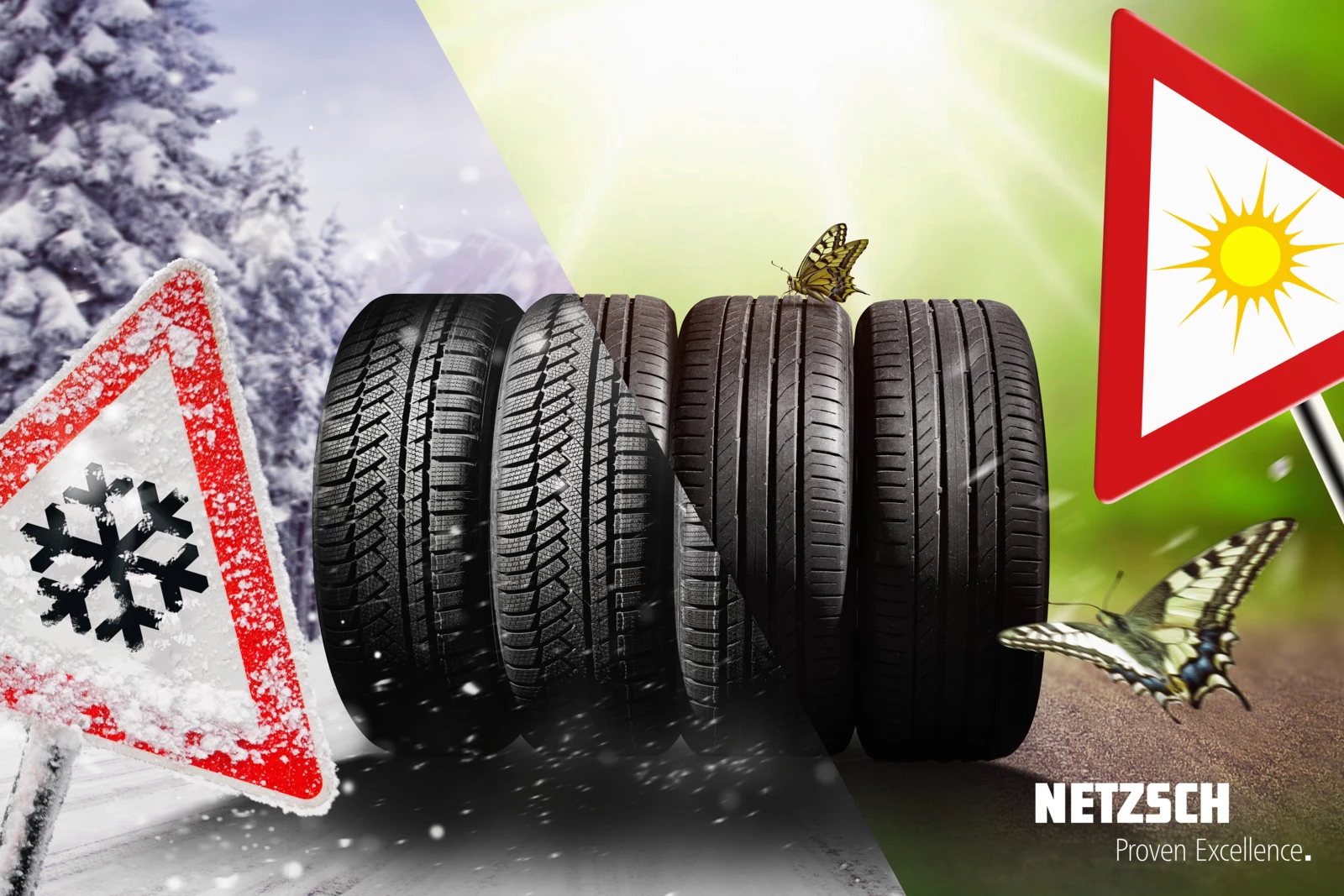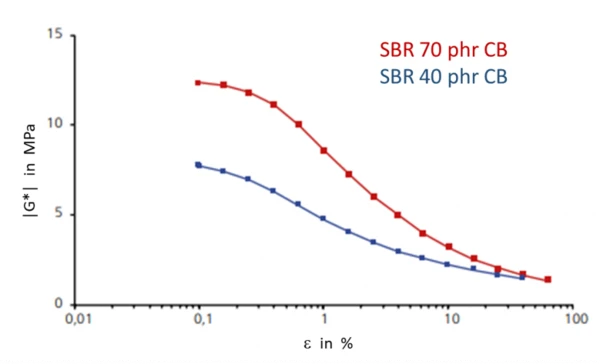
11.10.2021 by Dr. Sahbi Aloui
Winter and Summer Tires or Rather All-Season Tires?
Twice a year it’s time to change tires. But is it really necessary to replace summer tires with winter tires every six months? Isn’t it better to do without the two and use all-season tires instead? We will answer that question for you.
Winter has finally arrived. The semi-annual tire change is due. A second set of tires, a second set of rims, storage costs, and so on – many drivers are annoyed by this time-consuming and expensive routine. But is it really necessary to replace summer tires with winter tires every six months? Isn’t it better to do without the two and use all-season tires instead? What is allowable and what are the main differences between the tire types? NETZSCH has the answer for you.
In Germany it has been forbidden to drive with summer tires under winter conditions since 2010. From a technical point of view, the difference between the tire types lies in the rubber compound and the profile of the tire treads. Winter tires must remain elastic even in the cold and therefore have a relatively soft rubber compound. In addition, the profile ensures a high level of grip on snow and ice. Summer tires must ensure driving and braking stability even under extreme heat. That is why they have a hard rubber compound. In addition, their profile is optimized for aquaplaning (a.k.a. hydroplaning). All-season tires must adapt to the conditions in summer and winter. This can, of course, only be a compromise. Since the all-season tire must meet the legal requirements of a winter tire, it shows its disadvantages especially in summer. The consequences are high wear and tear and longer braking distances. But even in winter, it shows losses in braking distance, grip and cornering behavior.
What do “hard-“ and “soft rubber compound” mean in this context?
Material strength is a mechanical property. It can be easily determined using dynamic-mechanical analysis. For that purpose, the NETZSCH High-Force DMA GABO Eplexor® 500 N is appropriate. It is easy to handle, user-friendly and offers a variety of options along with different test geometries for material characterization and high resolution. The independence of the static and dynamic drives which generate the mechanical load additionally enables versatile use of the High-Force DMA GABO Eplexor® 500 N for static material testing such as tensile tests, CreepCreep은 일정한 힘 아래에서 시간과 온도에 따라 달라지는 소성 변형을 나타냅니다. 고무 화합물에 일정한 힘이 가해지면 가해진 힘에 인해 발생하는 초기 변형이 고정되지 않습니다. 변형은 시간이 지남에 따라 증가합니다creep or RelaxationRelaxation은 고무에 일정한 변형률이 가해지면, 변형률을 유지하기 위해 필요한 힘은 일정하지는 않지만 시간에 따라 감소합니다. 이러한 특성을 ‘응력 완화’라고 부릅니다. 응력완화의 원인이 되는 과정은 물리적 또는 화학적 그리고 정상적인 조건 하에, 둘 다 동시에 일어날 수 있습니다. relaxation measurements.
To illustrate the hard/soft behavior of rubber materials, we prepared two carbon-black-filled SBR samples (styrene-butadiene rubber) with filler volume fractions of 40 and 70 phr. Phr or parts per hundred rubber denotes in the rubber industry the mass fractions of the individual mixture components in a mixture formulation, based on 100 mass fractions of the base polymer. The SBR samples are designated as SBR 40 CB and SBR 70 CB respectively. StrainStrain describes a deformation of a material, which is loaded mechanically by an external force or stress. Rubber compounds show creep properties, if a static load is applied.Strain sweeps were performed in double shear mode at room temperature and a frequency of 10 Hz. Figure 1 shows the variation of the shear modulus |G*| as a function of the dynamic StrainStrain describes a deformation of a material, which is loaded mechanically by an external force or stress. Rubber compounds show creep properties, if a static load is applied.strain amplitude Ɛ.

Figure 1 shows that increasing the Carbon BlackTemperature and atmosphere (purge gas) affect the mass change results. By changing the atmosphere from, e.g., nitrogen to air during the TGA measurement, separation and quantification of additives, e.g., carbon black, and the bulk polymer can become possible.carbon black volume fraction from 40 phr (blue curve) to 70 phr (red curve) leads to high shear moduli |G*|, indicating harder rubber compounds. At 0,1 % dynamic StrainStrain describes a deformation of a material, which is loaded mechanically by an external force or stress. Rubber compounds show creep properties, if a static load is applied.strain, |G*| is 8 MPa for SBR 40 CB und 12,4 MPa for SBR 70 CB. Accordingly, it may be deduced that the SBR 40 CB compound corresponds to winter tire while the SBR 70 CB compound corresponds to summer tire.
The decrease in |G*| with increasing dynamic StrainStrain describes a deformation of a material, which is loaded mechanically by an external force or stress. Rubber compounds show creep properties, if a static load is applied.strain amplitude is explained by the Payne effect, which refers to StressStress is defined as a level of force applied on a sample with a well-defined cross section. (Stress = force/area). Samples having a circular or rectangular cross section can be compressed or stretched. Elastic materials like rubber can be stretched up to 5 to 10 times their original length.stress-induced damage of the filler network.
Winter and summer tires… or rather all-season tires? We measured it!
So let´s answer the question “Winter and summer tires or rather all-season tires?”. It can be concluded that all-season tires are out of the question when driving in extreme winter weather such as continuous snow or heavy rain. All-season tires are worth considering for those who drive only in flat country, in cities, or just a few kilometers per year. In contrast, frequent drivers and those who attach great importance to safe driving in winter, as well as to reduced fuel consumption, cannot do without a second set of tires. Please find further information about our DMA GABO Eplexor® series in our brochure.